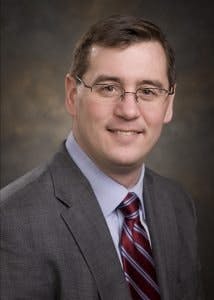Recent hurricanes — and the power outages that resulted — make it clear that regulators must develop economic models that will allow more utility microgrids and energy storage, says S&C Electric’s Michael Kilpatrick.
Michael Kilpatrick, S&C Electric
“Utilities should be able to build microgrids, operate them, and get cost recovery for them. And there is no mechanism for them to do that. Yet everybody wants a resilient grid, and we have the tools to deliver a resilient grid. But we don’t have the regulatory models to allow it,” says Kilpatrick, who serves as vice president – power systems solutions.
Kilpatrick will be among speakers participating in a thought leader panel Tuesday, November 7 at Microgrid 2017, a gathering of more than 400 microgrid companies and their customers in Boston.
Microgrid 2017 sold out! Register now for Microgrid 2018.
In a recent interview, Kilpatrick likened microgrids to installing underground distribution and transmission lines. Both are storm hardening measures.
Yet while cost recovery models exist for burying utility cable, they are vague at best for microgrids and energy storage in many states. As a result, while utilities want to build microgrids, they are stymied about how to move forward.
“It is the regulations that have to change,” Kilpatrick says.
The argument for cost recover is particularly complicated in states that have restructured utility monopoly rules so that retail suppliers can compete for customers.
Utilities cannot typically own and operate power plants in these states. So some argue that they likewise should not be allowed to own and operate microgrids and energy storage in these states. Central to this debate is confusion over how to define microgrids and energy storage. Are they generation or something else entirely?
Credit: “Competitive Electricity Market
Regulation in the United States: A Primer,” NREL
S&C maintains that a role exists for utility microgrids and energy storage because “that is most fair to ratepayers in that it unlocks renewables for multiple ratepayers, not just one or two,” says Kilpatrick.
For behind-the-meter installations — those on customer premises — private, non-utility investment often makes sense, he says, citing as examples microgrids at military facilities, hospitals, universities and other campuses. Ratepayer subsidy of microgrids and energy storage does not makes sense in these cases, he says.
“I wouldn’t want to see the regulators say, ‘Okay ratepayer of utilities, let’s subidize batteries in everybody’s garage, the way we did in some states in subsidizing solar panels on their roofs. It’s not the model that should be followed,” Kilpatrick says.
The public purpose for a microgrid becomes painfully clear in the midst of a power outage, especially for the more vulnerable in society, he says.
“When I’m trapped in my fifth story apartment, and I have to walk downstairs to get to work, it’s an inconvenience. For my 82-year-old neighbor, it’s a prison. She can’t get out,” he says.
He noted that food poising becomes a particular concern during power outages for seniors who often suffer from a weakened sense of smell. They cannot detect when lack of refrigeration has left food spoiled.
“Ratepayers and citizens benefit from microgrids. it’s a question of the economic modeling to help them pay for it and justify it, no different than justifying putting the cables underground,” he says.
He sees installing microgrids as a proactive way to avert the economic damage and inefficiencies created by power outages. By way of example, Kilpatrick notes that following Hurricane Maria, Puerto Rico found itself using police officers to direct traffic, a questionable use of resources given that crime typically rises during power outages. But since traffic lights were out, police were needed to help first responders and infrastructure repair workers travel where they were needed.
Kilpatrick says that interest in microgrids has heightened since the recent round of hurricanes that caused massive power outages in Florida, Texas and Puerto Rico. But he has not seen an uptick in regulatory activity to help overcome problems hampering their development. “My fear is that memories are short,” he says.
For more on this topic, see the utility microgrids channel on Microgrid Knowledge.







